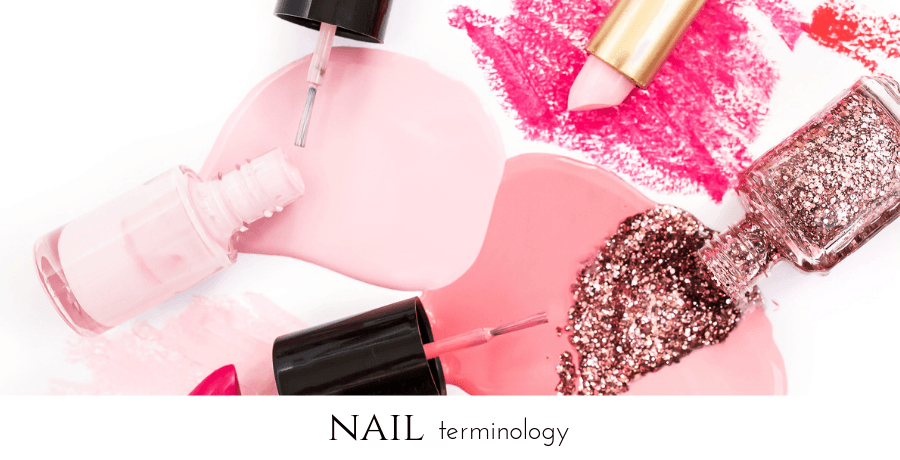
There’s quite a lot of confusion when it comes to the nail terminology and product placement.
So, today’s subject is exactly that – the nail terminology, and (I wouldn’t be myself if I didn’t add something extra 😉 ) some helpful and practical tips you can use right away.
Cuticle area
Product placed here should create a very fine and consistent line, be blended well, and flash to the nail. Make sure you’ve got a tiny gap, approximately 1 mm between the product and the cuticle to avoid lifting.
Apex
The Apex indicates the stress point (the weakest point of the nail) which is the highest point of the nail too. The product goes up from the cuticle and from there runs straight to the free edge, or tapers down, such as the case of a stiletto.
Sidewalls
The Side Walls of the natural nail determine how broad the extended nail should be. The extended free edge should be as narrow as the natural nail is (from side wall to side wall) and consistent in shape through the whole length, in the case of a square. The stiletto shape – side walls will taper and create a pointy tip.
Lower Arch
The Lower arch is determined by the width of the natural side walls and runs consistently. Both sides of the lower arch must be parallel to each other.
Upper Arch
The Upper Arch is determined by the Apex. From that point, the line tapers down to the cuticle area and runs straight to the extension’s free edge in the square shape. In a stiletto, the shape will taper to the free edge as well.
Convex & Concave
The Convex – the exterior curve, and Concave – the interior curve or “the tunnel” are identical and symmetrical through the entire length of the nail. If, for instance, the centre of the nail is thinner than the sides, the nail won’t be strong.
C-curve & Hair Line
The C-curve depends on the style – a salon and competition. In the salon, that curve will be between 25 – 35% of a circle. The competition standard is 50% of a circle. The Hair Line should be 1-2 tips thick when talking about salon nails, where the competition thickness is no more than a business card.
Nail bed elongation
Nowadays the Nail Bed elongation is so popular that almost every client gets a P&W with the cover pink. When elongating the bed, make sure the colour of the cover pink compliments the customer’s skin tone and is in balance with the extension’s free edge.
Extension’s Free Edge
The Free Edge is as narrow as the natural nail and runs consistently with the sidelines. The length of the extension’s free edge salon standard is determined by several aspects:
- If the nail breaks at the stress point repeatedly, it means that this particular extension is too long. You should keep it shorter or strengthen the stress point.
- If the nail bed is short, you shouldn’t create a long extension. The shorter the nail bed – the shorter the extension. If a natural nail is a decent length, then you can extend it to any desired and manageable length.
- The safest length of the extension is when it’s no longer than the nail bed. If creating longer extensions make sure to build strong enough apex.
Smile Line
The easiest way to establish the Smile Line is to follow the curvature of natural nail’s line. However, when the nail bed is elongated, that rule doesn’t apply. For the square shape, you may do a soft or deep smile line, and both will look good. For the stiletto, almond, and any other pointy shape – create deep lines to complement the final look.
Ta-dah 🙂 I hope it helps.
